|
|
In the
darkness of an early July morning in 1945, on a desolate spot in the New
Mexico desert named after a John Donne sonnet celebrating the Holy Trinity,
the first atomic bomb was exploded. J. Robert Oppenheimer later remembered
that the immense flash of light, followed by the thunderous roar, caused a
few observers to laugh and others to cry. But most, he said, were silent.
Oppenheimer himself recalled at that instant a line from the Bhagavad-Gita:
"I am become death, the shatterer of worlds."
There is no reason to think that anyone on board the Nina,
the Pinta, or the Santa Maria, on an equally dark early morning four and a
half centuries earlier, thought of those ominous lines from the ancient
Sanskrit poem when the crews of the Spanish ships spied a flicker of light
on the windward side of the island they would name after the Holy Saviour.
But the intuition, had it occurred, would have been as appropriate then as
it was when that first nuclear blast rocked the New Mexico desert sands.
In both instances-at the Trinity test site in 1945 and at San
Salvador in 1492-those moments of achievement crowned years of intense
personal struggle and adventure for their protagonists and were culminating
points of ingenious technological achievement for their countries. But both
instances also were prelude to orgies of human destructiveness that, each in
its own way, attained a scale of devastation not previously witnessed in the
entire history of the world.
Just twenty-one days after the first atomic test in the
desert, the Japanese industrial city of Hiroshima was leveled by nuclear
blast; never before had so many people-at least 130,000, probably many
more-died from a single explosion. Just twenty-one years after Columbus's
first landing in the Caribbean, the vastly populous island that the explorer
had re-named Hispaniola was effectively desolate; nearly 8,000,000
people-those Columbus chose to call Indians-had been killed by violence,
disease, and despair. It took a little longer, about the span of a single
human generation, but what happened on Hispaniola was the equivalent of more
than fifty Hiroshimas. And Hispaniola was only the beginning.
Within no more than a handful of generations following their
first encounters with Europeans, the vast majority of the Western
Hemisphere's native peoples had been exterminated. The pace and magnitude of
their obliteration varied from place to place and from time to time, but for
years now historical demographers have been uncovering, in region upon
region, post-Columbian depopulation rates of between 90 and 98 percent with
such regularity that an overall decline of 95 percent has become a working
rule of thumb. What this means is that, on average, for every twenty natives
alive at the moment of European contact-when the lands of the Americas
teemed with numerous tens of millions of people-only one stood in their
place when the bloodbath was over.
To put this in a contemporary context, the ratio of native
survivorship in the Americas following European contact was less than half
of what the human survivorship ratio would be in the United States today if
every single white person and every single black person died. The
destruction of the Indians of the Americas was, far and away, the most
massive act of genocide in the history of the world. That is why, as one
historian aptly has said, far from the heroic and romantic heraldry that
customarily is used to symbolize the European settlement of the Americas,
the emblem most congruent with reality would be a pyramid of skulls.
Scholarly estimates of the size of the post-Columbian
holocaust have climbed sharply in recent decades. Too often, however,
academic discussions of this ghastly event have reduced the devastated
indigenous peoples and their cultures to statistical calculations in
recondite demographic analyses. It is easy for this to happen. From the very
beginning, merely taking the account of so mammoth a cataclysm seemed an
impossible task. Wrote one Spanish adventurer-who arrived in the New World
only two decades after Columbus's first landing, and who himself openly
reveled in the torrent of native blood-there was neither "paper nor time
enough to tell all that the [conquistadors] did to ruin the Indians and rob
them and destroy the land." As a result, the very effort to describe the
disaster's overwhelming magnitude has tended to obliterate both the writer's
and the reader's sense of its truly horrific human element.
In an apparent effort to counteract this tendency, one
writer, Tzvetan Todorov, begins his study of the events of 1492 and
immediately thereafter with an epigraph from Diego de Landa's Relacion de
las cosas de Yucatan:
The captain Alonso Lopez de Avila, brother-in-law of the
adelantado Montejo, captured, during the war in Bacalan, a young Indian
woman of lovely and gracious appearance. She had promised her husband,
fearful lest they should kill him in the war, not to have relations with any
other man but him, and so no persuasion was sufficient to prevent her from
taking her own life to avoid being defiled by another man; and because of
this they had her thrown to the dogs.
Todorov then dedicates his book "to the memory of a Mayan
woman devoured by dogs."
It is important to try to hold in mind an image of that
woman, and her brothers and sisters and the innumerable others who suffered
similar fates, as one reads Todorov's book, or this one, or any other work
on this subject-just as it is essential, as one reads about the [fraudulent] Jewish
Holocaust or the horrors of the African slave trade, to keep in mind the
treasure of a single life in order to avoid becoming emotionally
anesthetized by the sheer force of such overwhelming human evil and
destruction. There is, for example, the case of a small Indian boy whose
name no one knows today, and whose unmarked skeletal remains are hopelessly
intermingled with those of hundreds of anonymous others in a mass grave on
the American plains, but a boy who once played on the banks of a quiet creek
in eastern Colorado-until the morning, in 1864, when the American soldiers
came. Then, as one of the cavalrymen later told it, while his compatriots
were slaughtering and mutilating the bodies of all the women and all the
children they could catch, he spotted the boy trying to flee:
There was one little child, probably three years old, just
big enough to walk through the sand. The Indians had gone ahead, and this
little child was behind following after them. The little fellow was
perfectly naked, travelling on the sand. I saw one man get off his horse, at
a distance of about seventy-five yards, and draw up his rifle and fire-he
missed the child. Another man came up and said, "Let me try the son of a
bitch; I can hit him." He got down off his horse, kneeled down and fired at
the little child, but he missed him. A third man came up and made a similar
remark, and fired, and the little fellow dropped.
We must do what we can to recapture and to try to understand,
in human terms, what it was that was crushed, what it was that was butchered
It is not enough merely to acknowledge that much was lost. So close to total
was the human incineration and carnage in the post-Columbian Americas,
however, that of the tens of millions who were killed, few individual lives
left sufficient traces for subsequent biographical representation...
***
Moreover, the important question for the future in this case
is not "can it happen again?" Rather, it is "can it be stopped?" For the
genocide in the Americas, and in other places where the world's indigenous
peoples survive, has never really ceased. As recently as 1986, the
Commission on Human Rights of the Organization of American States observed
that 40,000 people had simply "disappeared" in Guatemala during the
preceding fifteen years. Another 100,000 had been openly murdered. That is
the equivalent, in the United States, of more than 4,000,000 people
slaughtered or removed under official government decree-a figure that is
almost six times the number of American battle deaths in the Civil War,
World War One, World War Two, the Korean War, and the Vietnam War combined.'
Almost all those dead and disappeared were Indians, direct
descendants - as was that woman who was devoured by dogs - of the Mayas,
creators of one of the most splendid civilizations that this earth has ever
seen. Today, as five centuries ago, these people are being tortured and
slaughtered, their homes and villages bombed and razed-while more than
two-thirds of their rain forest homelands have now been intentionally burned
and scraped into ruin.' The murder and destruction continue, with the aid
and assistance of the United States, even as these words are being written
and read. And many of the detailed accounts from contemporary observers read
much like those recorded by the conquistadors' chroniclers nearly 500 years
earlier.
"Children, two years, four years old, they just grabbed them
and tore them in two," reports one witness to a military massacre of Indians
in Guatemala in 1982. Recalls another victim of an even more recent assault
on an Indian encampment:
With tourniquets they killed the children, of two years, of
nine months, of six months. They killed and burned them all.... What they
did [to my father] was put a machete in here (pointing to his chest) and
they cut open his heart, and they left him all burned up. This is the pain
we shall never forget ... Better to die here with a bullet and not die in
that way, like my father did."
Adds still another report, from a list of examples seemingly
without end:
At about 1:00 p.m., the soldiers began to fire at the women
inside the small church. The majority did not die there, but were separated
from their children, taken to their homes in groups, and killed, the
majority apparently with machetes.... Then they returned to kill the
children, whom they had left crying and screaming by themselves, without
their mothers. Our informants, who were locked up in the courthouse, could
see this through a hole in the window and through the doors carelessly left
open by a guard. The soldiers cut open the children's stomachs with knives
or they grabbed the children's little legs and smashed their heads with
heavy sticks.... Then they continued with the men. They took them out, tied
their hands, threw them on the ground, and shot them. The authorities of the
area were killed inside the courthouse.... It was then that the survivors
were able to escape, protected by the smoke of the fire which had been set
to the building. Seven men, three of whom survived, managed to escape. It
was 5:30 p.m.
In all, 352 Indians were killed in this massacre, at a time
when 440 towns were being entirely destroyed by government troops, when
almost 10,000 unarmed people were being killed or made to "disappear"
annually, and when more than 1,000,000 of Guatemala's approximately
4,000,000 natives were being displaced by the deliberate burning and wasting
of their ancestral lands. During such episodes of mass butchery, some
children escape; only their parents and grandparents are killed. That is why
it was reported in Guatemala in 1985 that "116,000 orphans had been
tabulated by the judicial branch census throughout the country, the vast
majority of them in the Indian townships of the western and central
highlands."
Reminders are all around us, if we care to look, that the
fifteenth- and sixteenth-century extermination of the indigenous people of
Hispaniola, brought on by European military assault and the importation of
exotic diseases, was in part only an enormous prelude to human catastrophes
that followed on other killing grounds, and continue to occur today-from the
forests of Brazil and Paraguay and elsewhere in South and Central America,
where direct government violence still slaughters thousands of Indian people
year in and year out, to the reservations and urban slums of North America,
where more sophisticated indirect government violence has precisely the same
effect-all the while that Westerners engage in exultation over the 500th
anniversary of the European discovery of America, the time and the place
where all the killing began.
Other reminders surround us, as well, however, that there
continues among indigenous peoples today the echo of their fifteenth and
sixteenth century opposition to annihilation, when, despite the wanton
killing by the European invaders and the carnage that followed the
introduction of explosive disease epidemics, the natives resisted with an
intensity the conquistadors found difficult to believe. "I do not know how
to describe it," wrote Bernal Diaz del Castillo of the defiance the Spanish
encountered in Mexico, despite the wasting of the native population by
bloodbath and torture and disease, "for neither cannon nor muskets nor
crossbows availed, nor hand-to-hand fighting, nor killing thirty or forty of
them every time we charged, for they still fought on in as close ranks and
with more energy than in the beginning."
Five centuries later that resistance remains, in various
forms, throughout North and South and Central America, as it does among
indigenous peoples in other lands that have suffered from the Westerners'
furious wrath. Compared with what they once were, the native peoples in most
of these places are only remnants now. But also in each of those places, and
in many more, the struggle for physical and cultural survival, and for
recovery of a deserved pride and autonomy, continues unabated.
All the ongoing violence against the world's indigenous
peoples, in whatever form-as well as the native peoples' various forms of
resistance to that violence-will persist beyond our full understanding,
however, and beyond our ability to engage and humanely come to grips with
it, until we are able to comprehend the magnitude and the causes of the
human destruction that virtually consumed the people of the Americas and
other people in other subsequently colonized parts of the globe, beginning
with Columbus's early morning sighting of landfall on October 12, 1492. That
was the start of it all. This book is offered as one contribution to our
necessary comprehension.
American Holocaust: Columbus and the Conquest
of the New World
 Reviewed by
Guido G.B. Deimel
Reviewed by
Guido G.B. Deimel
Who was Christopher Columbus? Every schoolboy
knows, he discovered America. But in reality America had been discovered by
Native Americans thousands of years before. What would Spaniards of the
sixteenth century have said, had Native Americans landed at Spain's shores
and proclaimed to have discovered Europe?
Who knows that Columbus, prior to his career as a sailor, had been a
slave trader by profession who would become a holy crusader and personally
responsible for the killing of about half a million Natives and that it was
already Columbus who introduced those measures generally attributed to later
conquistadors, such as enslaving Indians and hunting them down with dogs?
In "American Holocaust. Columbus and the Conquest of the New World"
(Oxford University Press 1992), David E. Stannard not only dispels common
myths, he tells the reader what was lost: the incredible variety of cultures
and the impressive achievements Native Americans had developed throughout
the millennia. How well known is the fact that most Native Americans were
living in towns and villages as farmers, long before Columbus and that the
majority of Native societies in Northern America was organized
democratically, including women's right to vote, long before such an idea
was conceivable to Europeans? How well known is it that - unlike European
cities of the time - the magnificent capital of the Aztec society took its
"drinking water ... from springs ... piped into the city by a huge aquaeduct
system" that amazed the Spaniards (p. 5), just as they were amazed at the
city's cleanliness and order: "at least 1000 public workers were employed to
maintain the city's streets and keep them clean" (p. 5).
When Columbus and a handful of Spanish sailors landed in the Caribbean,
this was the beginning of "far and away, the most massive act of genocide in
the history of the world" (p. x) and cost more than a hundred million lives
in five centuries: "To put this in a contemporary context, the ratio of
native survivorship in the Americas following European contact was less than
half of what the human survivorship would be in the United States today if
every single white person and every single black person died" (p. x).
How well known is it that in the Spanish missions in California the
Natives were forced to do slave labor and died in thousands and that the
missions were "furnaces of death that sustained their Indian population
levels for as long as they did only by driving more and more natives into
their confines" (p. 137) ?
Stannard's main goal, however, is to find an answer to the question of
which European cultural and religious traditions and precepts lead to this
carnage and why these proved so lethal to the Native American cultures. His
finds of theological predecessors of racist ideas - such as the Spaniard
Sepulveda's discussion about whether the Natives were humans at all, or the
widespread idea that the New World had been given to the Christians just as
Canaan had been given to the Jews - are very thought provoking and
insightful and to some readers certainly provocative.
Reading about hideous and appalling atrocities committed against Native
Americans sometimes made me feel angry, sometimes very sad, yet Stannard
writes always in a fair and calm manner, and - unlike many scholarly works -
his book kept me fascinated from the first page to the last .
Prologue /
Before Columbus /
Pestilence and Genocide /
Sex, Race and Holy War /
Epilogue
White Eagle Soaring: Dream Dancer of the 7th Fire


See
Real Dream Catchers' links
This is a crazy world. What can be
done? Amazingly, we have been mislead. We have been taught that we can
control government by voting. The founder of the Rothschild dynasty, Mayer
Amschel Bauer, told the secret of controlling the government of a nation
over 200 years ago. He said, "Permit me to issue and control the money of
a nation and I care not who makes its laws." Get the picture? Your freedom
hinges first on the nation's banks and money system. That's why we
advocate using the
Liberty Dollar, to understand the
monetary and banking system. Freedom is connected with
Debt Elimination for each individual. Not
only does this end personal debt, it places the people first in line as
creditors to the National Debt ahead of the banks. They don't wish for you
to know this. It has to do with recognizing WHO you really are in
A New Beginning: A Practical Course in Miracles.
You CAN
take
back your power and
stop volunteering to pay taxes to the collection
agency for the BEAST. You can take back that which is yours,
always has been yours and use it to pay off your debts. And you can send
others to these pages to discover what you are discovering.
I Want The Earth Plus 5% --
an allegory that's not a fairy tale.
Why Taxes Are Not Necessary
Behind the Stock Market Illusion
The Price of Free Corn
Get
a course to promote your business online, explode your sales
Get
software to promote your business online in less time
 Get
software to streamline your business and run it hands free. Get
software to streamline your business and run it hands free.
Disclaimer: The
statements on www.real-dream-catchers.com have not been evaluated by the FDA.
These dream catchers are not intended to diagnose nor treat nor cure any
disease or illnes
© 2007,
Allen
Aslan Heart / White Eagle Soaring of the
Little Shell Pembina Band,
a
Treaty
Tribe of the Ojibwe Nation
|

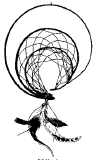
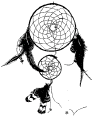
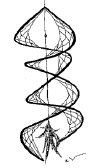
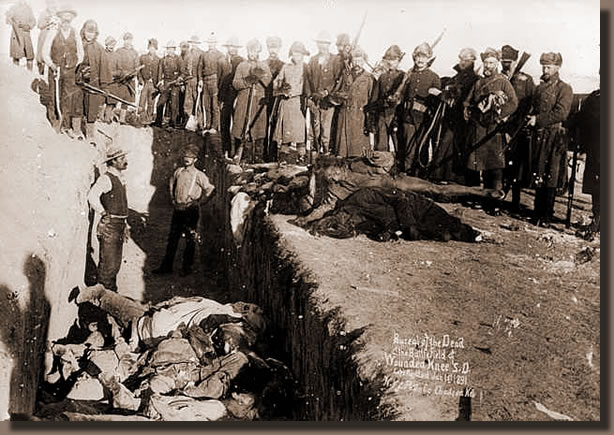


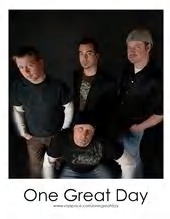 ONE
GREAT DAY is a diversified ever evolving four piece based in Minneapolis. We
have humbly embraced the idea that music is bigger than us all. Our style varies from acoustic pop
to electric funk blues. If it feels good then we'll play it. This is our identity. Just listen to our music and enjoy it as it
is. God Bless all!!!
ONE GREAT DAY
!!!
ONE
GREAT DAY is a diversified ever evolving four piece based in Minneapolis. We
have humbly embraced the idea that music is bigger than us all. Our style varies from acoustic pop
to electric funk blues. If it feels good then we'll play it. This is our identity. Just listen to our music and enjoy it as it
is. God Bless all!!!
ONE GREAT DAY
!!!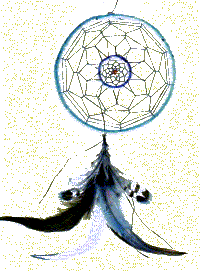
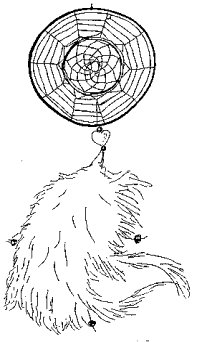

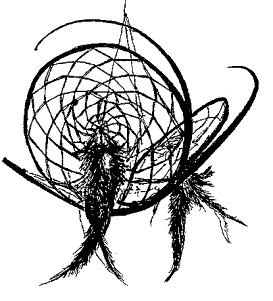
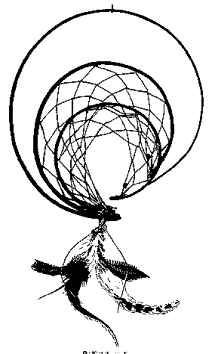

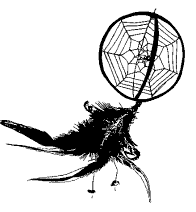
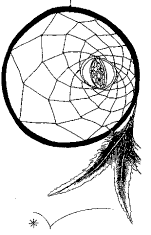
 Reviewed by
Guido G.B. Deimel
Reviewed by
Guido G.B. Deimel



 Get
software to streamline your business and run it hands free.
Get
software to streamline your business and run it hands free.